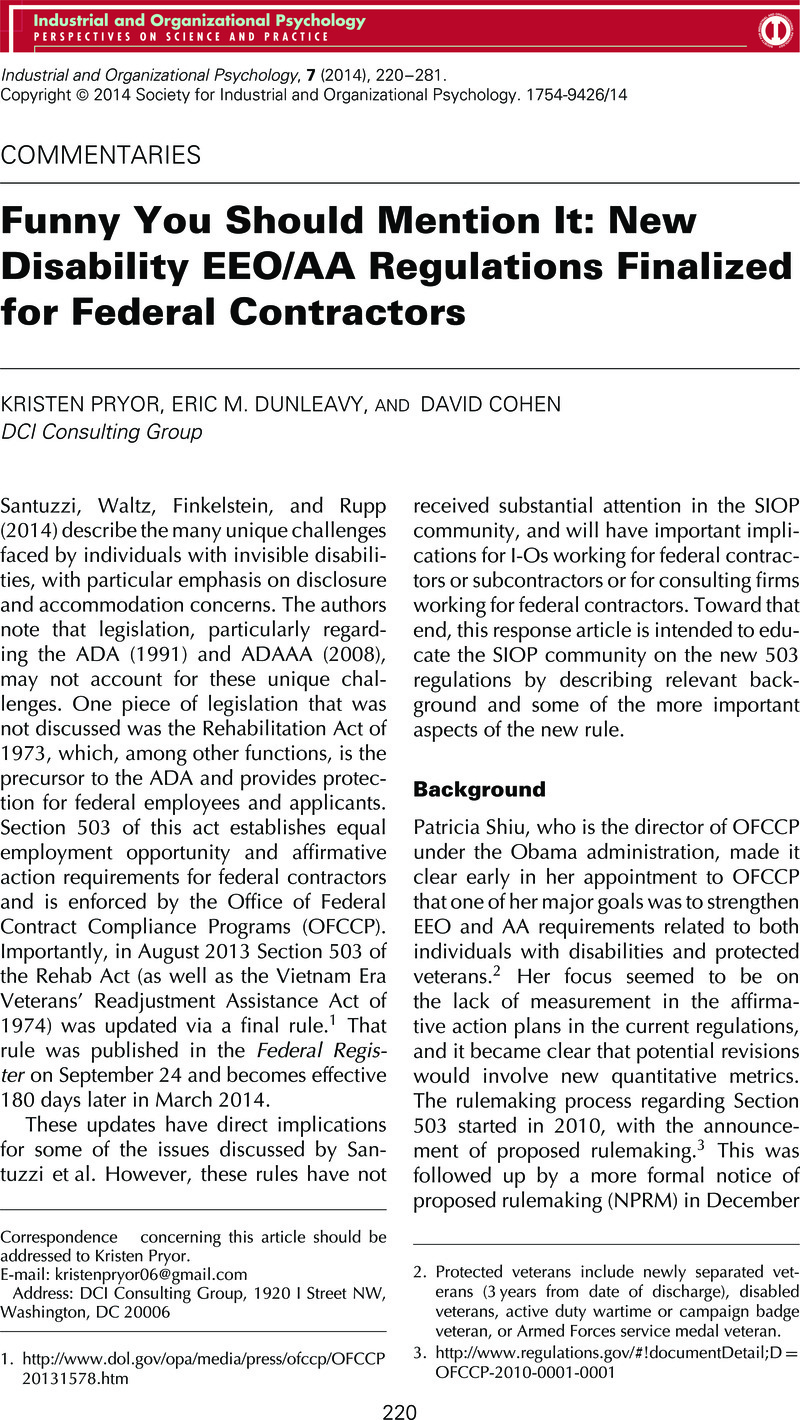Crossref Citations
This article has been cited by the following publications. This list is generated based on data provided by Crossref.
Gabbard, Rachel M.
Sharrer, David D.
Dunleavy, Eric M.
and
Cohen, Dave
2014.
New Self-Identification Regulations for Individuals With Disabilities: Will a Compliance-Focused Approach Work?.
Industrial and Organizational Psychology,
Vol. 7,
Issue. 2,
p.
227.
Santuzzi, Alecia M.
and
Waltz, Pamela R.
2016.
Disability in the Workplace.
Journal of Management,
Vol. 42,
Issue. 5,
p.
1111.
Murphy, Kevin R.
2018.
The Legal Context of the Management of Human Resources.
Annual Review of Organizational Psychology and Organizational Behavior,
Vol. 5,
Issue. 1,
p.
157.
Saxena, Mahima
and
Morris, Scott B.
2019.
Adverse impact as disability discrimination: Illustrating the perils through self-control at work.
Industrial and Organizational Psychology,
Vol. 12,
Issue. 2,
p.
138.
Zhu, Xiji
Law, Kenneth S.
Sun, Cong (Timothy)
and
Yang, Dan
2019.
Thriving of employees with disabilities: The roles of job self‐efficacy, inclusion, and team‐learning climate.
Human Resource Management,
Vol. 58,
Issue. 1,
p.
21.
Santuzzi, Alecia M.
Keating, Robert T.
Martinez, Jesus J.
Finkelstein, Lisa M.
Rupp, Deborah E.
and
Strah, Nicole
2019.
Identity Management Strategies for Workers with Concealable Disabilities: Antecedents and Consequences.
Journal of Social Issues,
Vol. 75,
Issue. 3,
p.
847.





